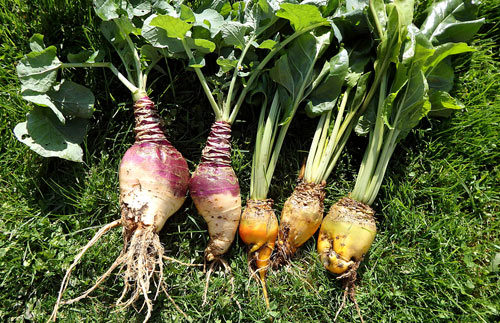151-Year-Old Design for Sustainable Farming
A blueprint from American essayist Donald G. Mitchell (aka Ik Marvel) on starting your own small-scale farm:
—
What a Garden May Be
Originally published in The Country Gentleman, May 7, 1864.

Here let me outline, in brief, what a farmer’s garden may be made, without other than home labor. A broad walk shall run down the middle of either square enclosure, or long parallelogram. A box edging upon either side is of little cost, and contributes eminently to neatness; it will hold good for eight years, without too much encroachment, and at that time, will sell to the nursery men for more than enough to pay the cost of resetting. On either side of this walk, in a border of six feet wide, the farmer may plant his dwarf fruit, with grapes at intervals, to climb upon a homemade cedar trellis, that shall overarch and embower the walk.

At least one-half the garden, as I before suggested, he may easily arrange, to till — Spring and Autumn — with plough; and whatever he places there in the way of tree and shrub, must be in lines parallel with the walk. On the other half, he will be subjected to no such limitations; there, he will establish his perennials — his asparagus, his thyme, his sage, his parsley; his rhubarb, his gooseberries, strawberries, and raspberries; and in an angle — hidden if he choose by a belt of shrubbery — he may have his hot-bed and compost heap. Fork culture, which all these crops demand, will admit of any arrangement he may prefer, and he may enliven the groupings, and win the good wife’s favor, by here and there a little circlet of such old-fashioned flowers as tulips — yellow lilies and white, with roses of all shades.

Upon the other half he may make distribution of part, by banding the various crops with border lines of China or Refugee beans; and he may split the whole crosswise, by a walk overarched with climbing Limas, or the London Horticultural — setting off the two ends with an abutment of Scarlet runners, and a surbase of fiery Nasturtium.
There are also available and pretty devices for making the land do double duty. The borderlines of China beans, which will be ripened in early autumn, may have Swedes sown in their shadow in the first days of July, so that when the Chinas have fulfilled their mission, there shall be a new line of purple green in their places. The early radishes and salads may have their little circlet of cucumber pits, no way interfering with the first, and covering the ground when the first are done. The early Bassano beets will come away in time to leave space for the full flow of the melons that have been planted at intervals among them. The cauliflower will find grateful shade under the lines of sweet corn, and the newly-set winter cabbages, a temporary refuge from the sun, under shelter of the ripened peas. I do not make these suggestions at random, but as the results of actual and successful experience.

With such simple and orderly arrangement, involving no excessive labor, I think every farmer and country liver may take pleasure in his garden as an object of beauty; making of it a little farm in miniature, with its coppices of dwarf trees, its hedge rows of currants and gooseberries, and its meadows of strawberries and thyme. From the very day on which, in Spring, he sees the first, faint, upheaving, tufted lines of green from his Dan O’Rourkes, to the day when the dangling Limas, and sprawling bloody tomatoes are smitten by the frost, it offers a field of constant progress and of successive triumphs. Line by line, and company by company, the army of green things take possession; the little flowery banners are flung to the wind; and lo! presently every soldier of them all — plundered only the earth and sunshine — is loaded with booty.